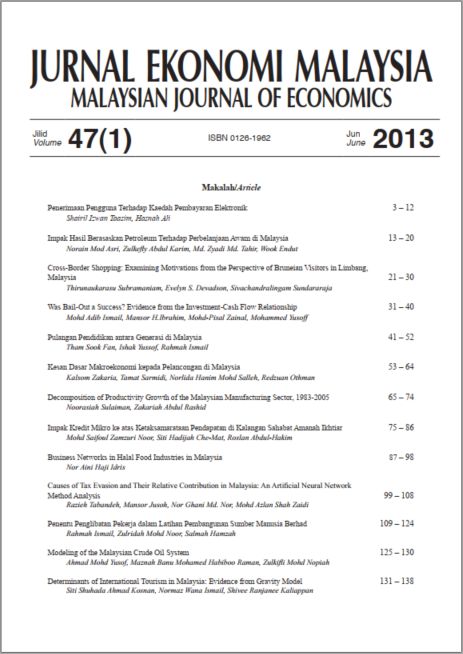Jurnal Ekonomi Malaysia
47 (1) 2013 31 – 40
Faculty of Economics and Management
Universiti Kebangsaan Malaysia
43600 UKM Bangi, Selangor D.E.
Abstract
The 1997-1998 Asian financial crisis affected the balance sheets of many Malaysian firms, which increased the financial constraints on such firms. To counter the impacts, the Malaysian government carried out various directed policy measures known collectively as the bail-out policy. The present paper examines the success of the policy to reduce the financial constraints. The present paper uses panel estimation methods to analyze the relationship between firms’ investments and their cash flows. The sample of study is split into two subsamples, consisting of the periods before and after the financial crisis, respectively. The success of the policy is measured based upon the easing of financial constraints faced by Malaysian firms. Using annual financial data, consisting of unbalanced panel from the period of 1988 to 2005, the results found favour the bail-out policy. This finding indicates the success of the bail-out policy to reduce the severity of financial constraints.
Keywords
Similar Articles
- Does Firm Size Matter for the Financial Constraints?
- Kesan Kekangan Kewangan ke atas Produktiviti Firma di Malaysia
- Elasticity of Demand for Cellular Phone Network Access in Malaysia
Bibliography
@article{ismail2013was,
title={Was Bail-Out A Success? Evidence from the Investment-Cash Flow Relationship},
author={Ismail, Mohd Adib and Ibrahim, Mansor and zainal, Mohd and Yusoff, Mohammed},
journal={Jurnal Ekonomi Malaysia},
volume={47},
number={1},
pages={31—40},
}
Receive updates when new articles are published.


